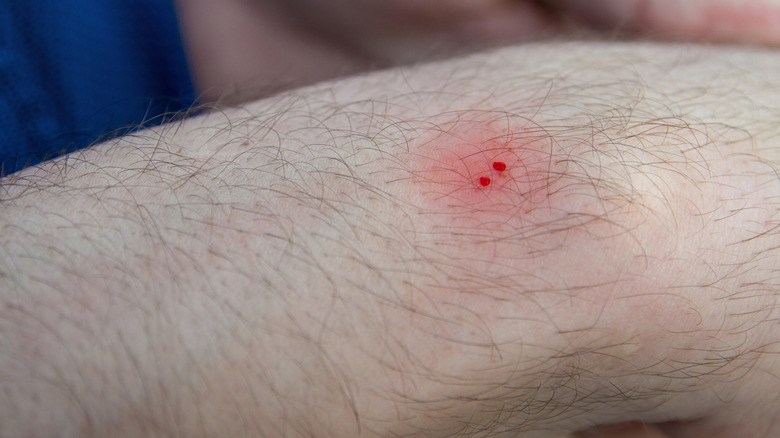
Fang Zheng/Getty Images
Although Australia tends to come to mind first when thinking about dangerous animals, Texas also has its fair share of venomous creatures. From the notorious Black Widow Spider to the Lone Star Tick, Texas definitely has enough terrifying animals and insects to make anyone second-guess a leisurely walk in the Texan wilderness.
But while there is plenty to fear in Texas, if you want to keep your kidneys safe and stay alive at the same time, then the Western Diamondback Rattlesnake is an animal to steer clear of at all costs. Although you don’t have to worry about this particular reptile hunting you down or striking first, if you accidentally step on it or make it feel threatened in any way, it may feel it has no choice but to bite you. When it does, it can inject as much as 800 milligrams of venom. That may not instantly kill you, but it can result in severe renal damage and eventual death. That’s why, even if the bite doesn’t seem so serious at first, it’s important to seek medical treatment immediately.
What to know about Western Diamondback Rattlesnake venom

Kristianbell/Getty Images
According to the U.S. Centers for Disease Control and Prevention, of the 7,000 to 8,000 people bitten by venomous snakes each year in the U.S., about five of those people don’t survive. Of those who manage to get medical treatment in a timely manner, as many as 44% of those who have been bitten end up with lifelong injuries from the incident. In the case of the Western Diamondback Rattlesnake, once the venom hits the bloodstream, its toxins quickly begin to trigger coagulation, changing blood from a liquid to a thicker or more solid substance (clotting), which can permanently damage the kidneys, per the World Health Organization. Because of the impact on the bloodstream, fatal hemorrhages, tissue damage, and limb amputation are also possible.
At the onset of the bite, you may experience a variety of symptoms like sweating, nausea, swelling, and difficulty breathing, which can range in severity depending on how much venom you’ve been injected with. As for your kidneys and other organs, it can take a couple of days before they’re affected. That’s why it’s paramount not to dismiss a bite from a Western Diamondback Rattlesnake; it really is a matter of life or death.
How to treat a rattlesnake bite

Marketlan/Getty Images
Once you realize you’ve been bitten, it’s essential that you get yourself medical treatment immediately. That may mean dialing 911 or having someone drive you to the emergency room. In the meantime, there are things that you should absolutely avoid doing so as to not make the bite a more problematic situation.
For starters, don’t even think about trying to suck out the venom. Just because it works in the movies, that doesn’t mean it works in real life. Even if you have a snakebite kit on you, according to UCI Health, these commercial kits are ineffective and do more harm than good. Also, don’t put ice on the bite, as it’s not going to help at all. No matter how much pain or swelling you’re experiencing, ibuprofen isn’t going to help, so skip any sort of medication, too. However, it is a good idea to cover the bite with a loose bandage or clean piece of cloth to prevent further infection and help keep it clean. Lastly, try to stay calm. People rarely instantly die from snakebites, as it takes a few hours for the venom to do its damage. So if you’ve called 911 or are on your way to the ER, you’re likely to survive. The only way to treat a venomous snakebite is with antivenom treatment.
Credit: healthdigest.com










